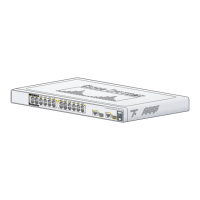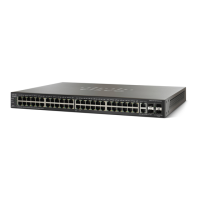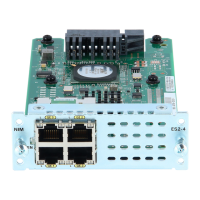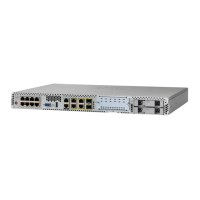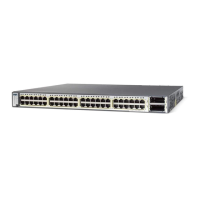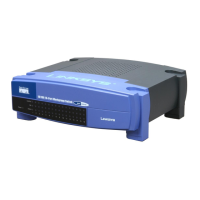Configuring VLANs
Defining Interface Settings
ESW 500 Series Switches Administration Guide 219
7
• Interface — The port number included in the VLAN.
• Interface VLAN Mode — Indicates the port mode. Possible values are:
-
General
— The port belongs to VLANs, and each VLAN is user-defined
as tagged or untagged (full 802.1Q mode).
-
Access
— The port belongs to a single untagged VLAN. When a port is
in Access mode, the packet types which are accepted on the port
(packet type) cannot be designated. It is also not possible to enable/
disable ingress filtering on an access port.
-
Trunk
— The port belongs to VLANs in which all ports are tagged
(except for an optional single native VLAN).
-
Customer
— The port belongs to VLANs. In Customer mode, the added
tag provides a VLAN ID to each customer, ensuring private and
segregated network traffic.
• PVID — Assigns a VLAN ID to untagged packets. The possible values are 1 to
4095. Packets classified to the Discard VLAN are dropped.
• Frame Type — Packet type accepted on the port. Possible values are:
-
Admit Tag Only
— Indicates that only tagged packets are accepted on
the port.
-
Admit All
— Indicates that both tagged and untagged packets are
accepted on the port.
• Ingress Filtering — Ingress filtering discards packets which do not include an
ingress port. The possible values are:
-
Enable
— Ingress filtering is activated on the port.
-
Disable
— Ingress filtering is not activated on the port.
Modifying VLAN Interface Settings
STEP 2 Click VLAN & Port Settings > VLAN Management > Interface Settings. The
VLAN
Interface Settings
Page
opens:
STEP 3 Click the Edit button. The
Edit VLAN Port Page
opens:
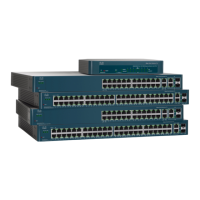
